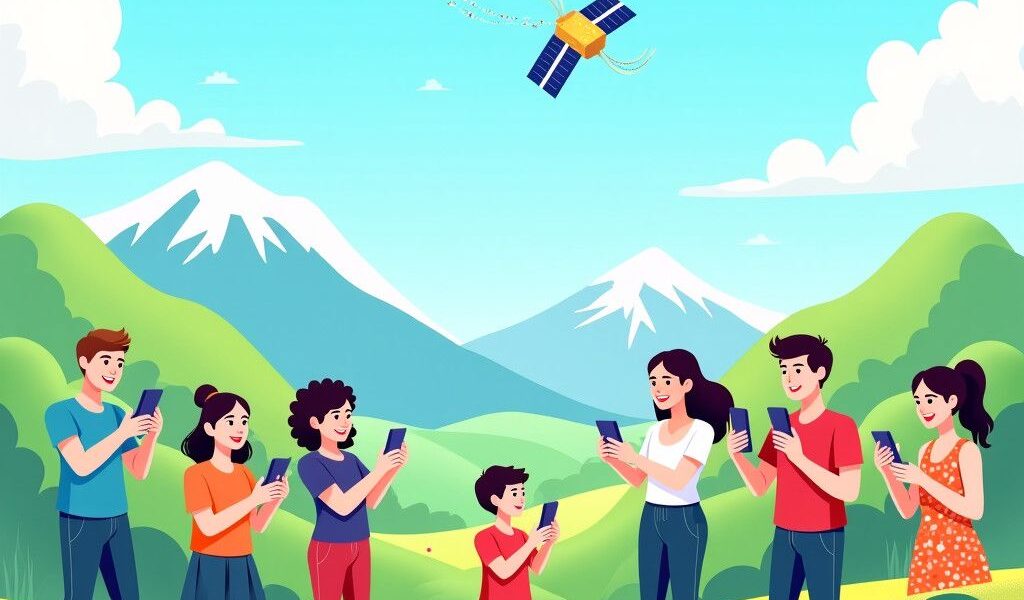New Zealand Launches Satellite Texting Service: A Game Changer for Connectivity
In an unprecedented move that marks a significant advancement in communication technology, New Zealand has introduced a nationwide satellite texting service. This initiative, rolled out by One NZ in collaboration with Starlink, is poised to enhance connectivity across the country, particularly in remote and rural areas where conventional mobile networks often fall short.
The introduction of satellite texting comes at a time when digital connectivity has become an essential element of everyday life. In regions where traditional mobile phone reception is limited, the ability to send and receive messages via satellite can provide vital lifelines. Traditionally, residents in these areas have faced challenges in accessing reliable communication, impacting everything from emergency services to community engagement.
One NZ’s partnership with Starlink exemplifies the potential of leveraging satellite technology to bridge gaps in connectivity. Starlink, recognized for its low Earth orbit satellite network, has the capacity to offer internet services to hard-to-reach locations. This integration allows One NZ to offer a seamless texting experience even when terrestrial mobile networks are unavailable.
For instance, in the rugged terrains of New Zealand’s South Island, where mountainous landscapes can obstruct signals, the satellite texting service means that users can still communicate effectively. This capability is particularly crucial for tourists and locals alike who may find themselves in emergencies or isolated scenarios.
In practical terms, customers using the satellite texting service will experience a more reliable form of communication no matter their location in New Zealand. The service allows users to send short messages through the same interfaces that they use for standard texting services. This means that whether someone is hiking in a national park or working on a farm, they can maintain connectivity with family and friends, or reach out for help if needed.
Moreover, the implications of this development extend beyond individual users. Businesses operating in remote areas can benefit significantly from satellite communications, enhancing operational efficiency and customer service. For example, those in the agriculture sector can stay in touch with suppliers and markets, ensuring timely deliveries and better management of resources.
The significance of this new service goes further when considering its potential in emergency situations. With natural disasters being a concern in many regions, having an assured texting service allows for better coordination and communication among emergency responders. In instances of earthquakes, floods, or severe weather conditions, the ability to send and receive messages without relying on traditional infrastructure can save lives.
In terms of market response and customer adoption, the launch has generated considerable buzz. Many users are eager to experience the added reliability of satellite-based texting. Early adopters have reported positive experiences, primarily appreciating the uninterrupted service even in areas where mobile signals are weak or nonexistent.
One fascinating aspect of this initiative is its potential impact on the future of mobile communication services. As satellite technology continues to improve and costs decrease, similar services may spread beyond New Zealand. Other countries facing connectivity challenges could look to New Zealand’s model for inspiration, encouraging global advancements in digital communication.
Looking ahead, One NZ has plans for future expansions of the satellite service. Enhanced features, including the possibility of integrating multimedia messaging and future partnerships with other technology providers, could further amplify the service’s offerings.
In summary, New Zealand’s foray into satellite texting not only symbolizes a leap forward in communication technology but also illuminates a practical solution to connectivity issues that have long plagued remote areas. As this service captures the interest of users, it sets a precedent for similar initiatives worldwide. The melding of satellite capabilities with traditional communication models could redefine how we connect, bridging the digital divide in ways that were previously unimaginable.








